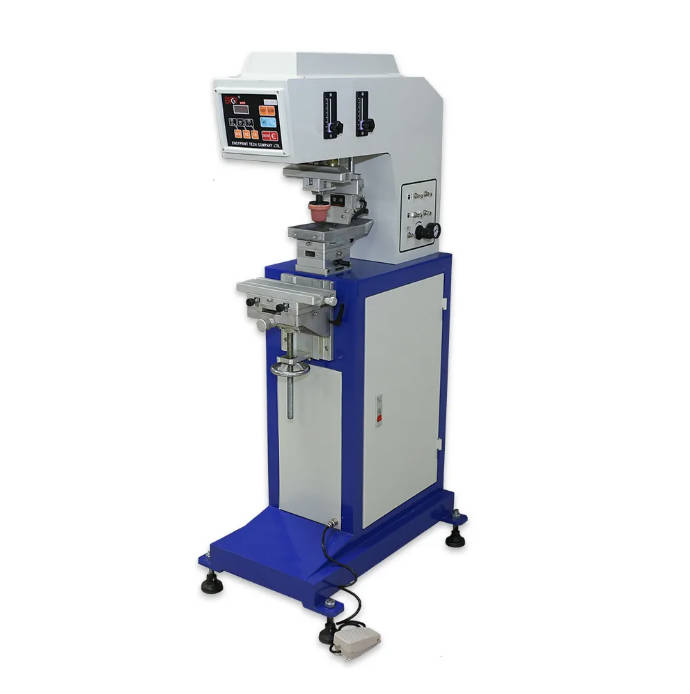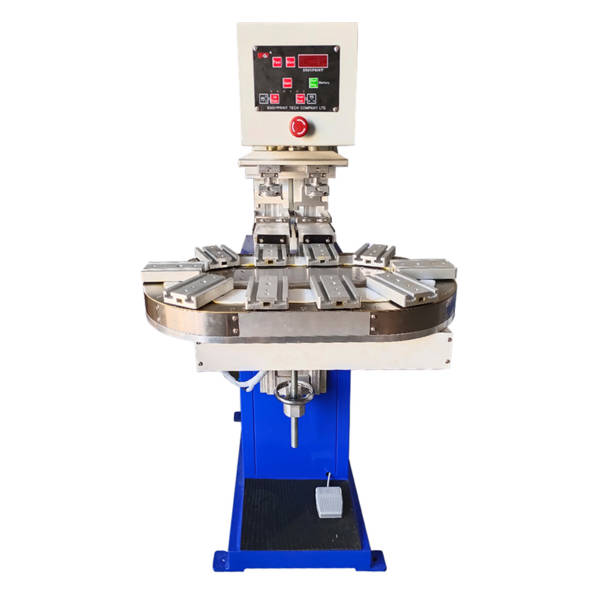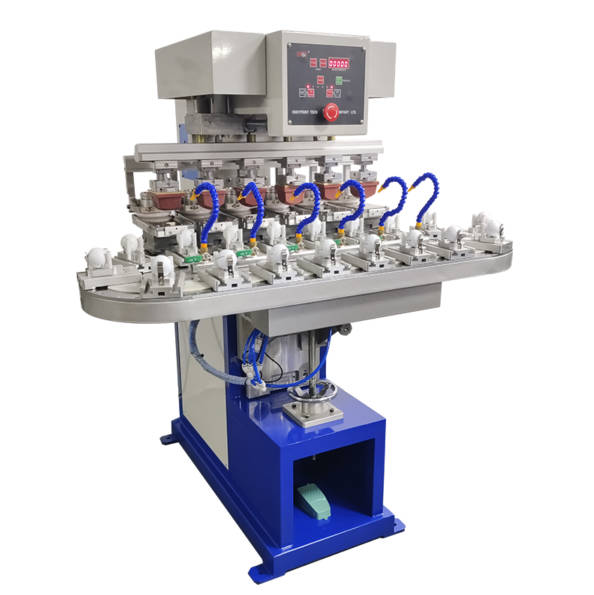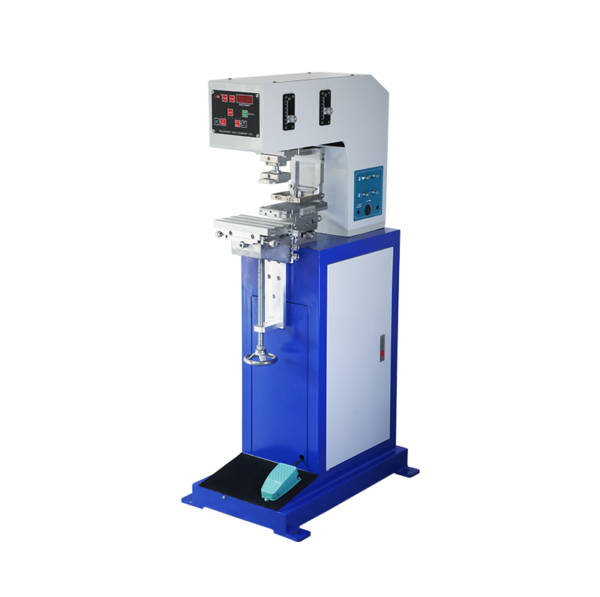
Pad printing is a versatile printing technique that relies on a series of specialized components to transfer ink onto different substrates.
Among these components, the ink cup holds significant importance. Its material composition can influence the efficiency, print quality,
and overall reliability of a pad printer. In this article, we will explore how the choice of ink cup material affects pad printing performance,
examining various types of cups and their respective benefits and drawbacks. Whether you are using a single-color or an automatic pad printing machine,
understanding these factors can help you make more informed decisions about your pad printing supplies and pad printing equipment.
We will also discuss best practices and recent innovations that could further optimize your printing process.
[Table of Contents]
- 1. Introduction
- 2. The Basics of Pad Printing and Ink Cups
- 3. Common Ink Cup Materials
- 4. Comparison of Ink Cup Materials
- 5. Key Factors Influencing Ink Cup Choice
- 6. Practical Considerations and Maintenance
- 7. Innovations in Ink Cup Technology
- 8. Conclusion
2. The Basics of Pad Printing and Ink Cups
Pad printing is an integral process in various industries, delivering precise and efficient prints on curved,
flat, or irregular surfaces. A pad printer typically consists of a printing pad, a cliché (or plate),
ink, and the substrate to be printed upon. One of the crucial elements in this setup is the ink cup, which holds the ink
and maintains its viscosity at an optimal level. Over the years, numerous pad printing machine designs have
emerged, but the fundamental role of the ink cup remains consistent.
The ink cup seals around the surface of the printing plate, helping regulate ink flow and preventing contamination or
excessive evaporation. Different cup materials influence how well the seal is formed, how resistant the cup is to
chemicals, and how effectively it distributes ink across the image etched on the plate. As the pad printing equipment
evolves to meet modern manufacturing needs, so do the materials used in constructing ink cups. Understanding the fundamentals
of how an ink cup integrates with the broader printing setup is vital for achieving consistent and high-quality prints,
particularly in mass-production environments where downtime and defects are costly.
3. Common Ink Cup Materials
Ink cups are crafted from a variety of materials, each offering unique properties that can enhance or hinder printing
performance. Below are some of the most prevalent materials found in today’s pad printing supplies:
3.1 Ceramic Ink Cups
Ceramic ink cups are known for their durability and chemical resistance. They can withstand high temperatures and often
offer a long lifespan. Because they are less prone to scratches, ceramic cups can maintain a tight seal over the printing
plate. However, ceramic cups may be heavier than alternatives and could be more expensive, especially when designed for
specialized applications.
3.2 Plastic Ink Cups
Plastic ink cups are lightweight and budget-friendly, making them an attractive option for short-run jobs or smaller pad printers.
Common plastics used include nylon and polyoxymethylene (POM), which provide moderate chemical resistance. Still, they may wear
out faster under rigorous conditions. Additionally, plastic cups might not hold up as well against certain solvents, which
can reduce their overall lifespan.
3.3 Metal Alloy Ink Cups
Metal alloy cups, often made from aluminum or stainless steel, offer a strong combination of durability and lightweight
construction. They also provide excellent resistance to solvents commonly used in pad printing. Nevertheless, they may
require careful handling to avoid dents or warping, which can compromise seal integrity. Metal alloy ink cups are commonly
found in high-speed, automatic pad printing machine setups where reliable performance is essential.
3.4 Composite Cups
Composite cups incorporate mixed materials—often metal interiors fused with plastic exteriors—to harness the benefits of
both. For instance, a composite cup might feature a metal ring for toughness and chemical resistance, paired with a
plastic body to keep it lightweight. These hybrids aim to balance cost, durability, and practicality, and are gaining
traction as pad printing equipment evolves.
4. Comparison of Ink Cup Materials
Choosing the right ink cup material for your pad printing machine is not a one-size-fits-all process.
Several factors, such as production volume, type of ink, and budget constraints, come into play. Below is a brief comparison:
| Material | Pros | Cons |
|---|---|---|
| Ceramic | Highly durable, excellent chemical resistance, long lifespan | Heavy, higher cost, more fragile if dropped |
| Plastic | Lightweight, cost-effective, easy to handle | Less chemical resistance, shorter lifespan, can warp under heat |
| Metal Alloy | Durable, chemical-resistant, suitable for high-speed production | Requires careful handling, can dent or warp if misused |
| Composite | Balanced properties, reduced weight, diverse applications | May have mixed performance based on material quality, can be costlier than plastic |
This comparison highlights that each type of ink cup brings distinct advantages and drawbacks. If you run a high-volume
production line requiring fast, consistent prints, a metal or composite cup might be your best bet. If you are working
on specialized products with solvents that demand top-tier chemical resistance, ceramic might fit better. Meanwhile,
plastic cups are suitable for smaller print jobs or short-run projects, particularly if cost is a limiting factor.
5. Key Factors Influencing Ink Cup Choice
Selecting an ink cup material involves more than just durability. Below are key factors that play a crucial role:
5.1 Production Volume
If your business requires thousands of prints per day, the cup’s durability and ability to maintain consistent ink
viscosity become paramount. Well-built materials like ceramics or metal alloys often excel in maintaining reliable
performance in large-scale productions. On the other hand, if you only need to print a few hundred items at irregular
intervals, plastics or composites might suffice.
5.2 Chemical Resistance
The type of ink you use will determine the level of chemical exposure your ink cup faces. Hardy materials such as
ceramics and stainless steel can resist solvent-based inks and aggressive cleaning agents better than many plastics.
For companies needing regular cleaning cycles, high chemical resistance can mean cost savings over time.
5.3 Heat Tolerance
Some printing processes or environmental conditions generate heat, causing certain plastics to warp or degrade.
Ceramics and metal alloys operate in higher temperature ranges, maintaining structural integrity for a longer period.
For consistent, accurate prints, especially in specialized applications, a heat-tolerant cup is paramount.
5.4 Budget Constraints
Although operation efficiency and longevity are important, many businesses must also consider short-term costs.
Plastic cups tend to be more wallet-friendly, but frequent replacements could lead to higher overall expenses
in the long run. Investing in a higher-priced but more durable cup material might offer better ROI.
6. Practical Considerations and Maintenance
Even the best ink cup material will not perform optimally without proper maintenance. Regular cleaning, periodic
inspections, and compatibility checks with your pad printing supplies are essential. In a high-speed
automatic pad printing machine setup, maintenance plays a pivotal role in minimizing downtime.
Below are some practical tips:
6.1 Proper Cup Sealing
A good seal between the cup and plate ensures consistent ink distribution and prevents premature ink drying.
Check the seal for wear or damage, and replace components as needed. Damaged edges can lead to smudges, incomplete
prints, or even damage to the cliché.
6.2 Cleaning Procedures
Choosing the correct cleaning agent for your ink type is crucial. Aggressive solvents might degrade plastic cups,
while abrasive scrubbing might scratch ceramic or metal surfaces. Adhering to manufacturer guidelines helps prolong
the lifespan of your chosen cup material.
6.3 Routine Inspection
Inspect your ink cup regularly for signs of cracking, denting, or warping. Early detection of problems can prevent
costly downtime. During inspections, verify that the cup remains intact and forms a seamless contact with the
printing plate. Also, keep tabs on the ring or blade that scrapes excess ink from the plate, as this component
also affects print quality.
6.4 Storage
Proper storage can extend the life of your ink cups. Keep them away from direct sunlight, which can degrade some
plastic cups. Store them in a dry, stable environment to avoid moisture-related issues like rust or mold,
particularly for metal or composite cups.
7. Innovations in Ink Cup Technology
The field of pad printing equipment is continuously evolving, with new ink cup designs and materials
regularly entering the market. Innovations target better ink flow, improved chemical resistance, and reduced
maintenance demands. These advancements reflect the industry’s push for more efficient and automated solutions:
7.1 Advanced Composite Materials
Research in material science has led to composites that fuse the chemical resilience of ceramics or metals with
the lighter weight of plastics. These materials can even integrate reinforced fibers to resist cracking or denting.
By reducing the overall mass, the printing machine experiences less wear over time.
7.2 Self-Cleaning Surfaces
Certain high-end ink cups now employ surface coatings designed to repel ink buildup. These self-cleaning coatings
aim to cut down on cleaning cycles, allowing for extended print runs without manual intervention. While the
initial investment might be high, streamlined operations can help justify the cost.
7.3 Automated Locking Mechanisms
In modern, automatic pad printing machine systems, the ink cup can be locked and unlocked through
software-controlled mechanisms. This optimization reduces human error and accelerates production. Some machines
even feature sensors to detect the cup’s integrity, alerting the operator if a cup becomes dislodged or compromised.
7.4 Integration with Digital Technologies
As digitalization advances, future ink cups may incorporate sensors that measure temperature, pressure, and ink
viscosity. Data collected could be relayed to operators or integrated into a closed-loop system, making real-time
adjustments to maintain optimal print conditions. Although still in its early stages, these possibilities open
new frontiers for precision and quality control in pad printing machine setups.
8. Conclusion
Choosing the right ink cup material is vital for achieving consistent, high-quality results in pad printing.
By weighing factors like durability, chemical resistance, heat tolerance, and budget, you can optimize performance
across diverse production scenarios.





